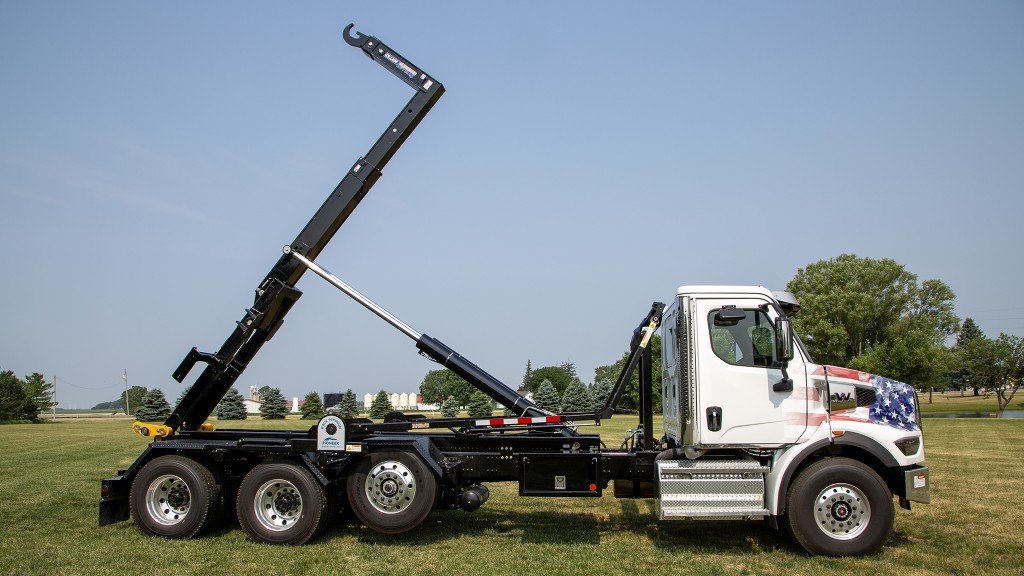Waste and Recycling Fleet Safety
Tools to ensure safe driving

Every year in North America, an estimated 20 percent of all fleet vehicles are involved in accidents. The direct and indirect costs of these accidents are tremendous. As such, safety initiatives are necessarily a critical concern for waste and recycling fleet managers and senior executives.
While many direct costs of accidents are covered by insurance programs, indirect costs can be extremely damaging. These costs include time and productivity lost due to injuries and damages, resulting in increases in insurance rates, legal costs, as well as negative publicity. Accidents impact so many aspects of waste fleet and business operations that estimating the true direct and indirect costs is difficult – but the stakes are high and the risks need to be mitigated at all levels of an organization.
“One accident can ruin your entire year,” says Don Diego Padilla II, VP Sales for Montreal-based FleetMind Solutions. Prior to working for FleetMind, Padilla says he worked for Allied Waste, and he’s seen first hand, accidents that have wiped out a whole year’s worth of profits for a division.
“Naturally, if you have an accident, it can be catastrophic. Nobody wants to even think that they might be a fatality, or that they might harm someone. And secondly, the financial implications are that accidents are extremely expensive. If you do wreck a truck, that’s about a $300,000 piece of equipment. And then there’s the liability for whatever else may have been damaged, and for other parties involved.”
Changes ahead
The Federal Motor Carrier Safety Administration (FMCSA – part of the U.S. Department of Transportation) recently launched a new fleet safety rating system – known as Comprehensive Safety Analysis (CSA) 2010 – which is now being implemented across North America to score fleets and drivers on their safety performance. This underscores the burgeoning move toward greater safety and driver accountability in the transportation industry in general. The new CSA 2010 is intended to improve road safety by keeping track of safety data related to both carriers and drivers, and by taking prompt action to correct or address any apparent issues.
In Canada, at this point, CSA 2010 should be looked into by Canadian carriers operating in the U.S., or for U.S. carriers operating north of the border. Each year, approximately 900,000 metric tonnes of hazardous waste cross the Canada-U.S. border. CSA 2010 is expected to have some major impacts for waste management and recycling firms in North America.
“CSA 2010 holds the hauler more accountable to driver safety standards than it did before,” comments Padilla.
Under the new CSA 2010, driver performance files will need to be updated on a continuous basis to list all violations over a 36 month period. This is meant to ensure complete safety transparency over a statistically significant period. A driver’s file will also need to provide the entire history of the individual’s safety performance, and drivers will need to adjust to increased monitoring and scrutiny. Fleet managers will also feel more pressure to ensure a greater culture of safe driving accountability. Finally, CSA 2010 means that safe drivers will be in even greater demand.
Planning it out
In order to be truly effective, a fleet safety plan needs to take into consideration how drivers are selected and trained, as well as vehicle inspection and maintenance, and ongoing monitoring and data collection.
Important elements of a fleet safety plan should include a formal safety policy with complete management support; clearly articulated roles and responsibilities; ongoing driver management and vehicle inspection and maintenance; accident reporting and investigation; and finally, efficient data collection.
FleetMind says that in order to support an effective safety program, managers need to identify and set policies and performance (KPI) measures. Because fleet safety is largely about reducing risk by reinforcing safe driving behaviour, fleet managers who have limited or no visibility into their drivers’ behaviour, cannot address or mitigate the issues, and cannot deal effectively with at-risk drivers. This lack of visibility directly impacts their risk factors, safety records and operating costs.
Waste and recycling firms need to approach safety management correctly, from the start. Then they need to ensure that fleet managers have the tools and information they need to proactively implement fleet safety initiatives and mitigate associated risks.
Ideally, a waste fleet manager should approach safety using four key steps. First he needs to identify the high risk drivers. Who are the drivers that constantly exceed speed limits, drive aggressively, accumulate complaints and are involved in the most accidents? Secondly, these drivers need to be coached toward safer and more defensive driving techniques. Incentives can be used to help motivate safer driving behaviour. Third, driving patterns and behaviour need to be continuously monitored to reinforce behaviours on a daily basis. Changing and maintaining driving behavior is a long-term process. Finally, systems and processes need to be put in place to deal effectively with any accidents that do occur. Accident management is an important piece of an overall safety program.
Using tools to change driver behaviour
Fleet management tools can provide managers with real-time visibility into driver activity and behaviour. Today’s most effective tools and practices include digital dashboards, fleet mapping, driver scoring and monitoring, reports and alarms, vehicle inspection and maintenance, and accident management. A fleet management system also needs to allow any given department to have access to centralized fleet safety data.
“The biggest way you can impact driver safety is to impact driver behaviour,” says Padilla. He says FleetMind’s FleetSmart system does just that. It includes all of the tools needed for effective fleet management.
“What we’ve focused on in the last 24 months, has been the driver experience. Our system allows for alarms to be set. So you can actually set up an alarm that says, if the driver is speeding more than a set limit, an alarm is recorded. Not just on a report, but also in the cab of the truck, and so lets the driver know he’s speeding.”
In effect, FleetMind’s system uses two alarms. The first alarm lets the driver know that a behaviour such as speeding is occurring, and it’s recorded in the system. If this situatoin does not change, a second alarm sends an email to a supervisor.
“The goal is not to say ‘aha’ we caught you speeding. The goal is to change the behaviour,” says Padilla. “And then the ideal scenario is that, because we have real-time communication, because there’s a dispatcher and a supervisor on the other end when these alarms occur, not only does the supervisor get an email, but for the dispatcher, there’s actually alarms that show up on their map.”
“Now, when a company does their safety evaluation, because you’ve got this hard data, you can actually sit your driver down and you can coach him to better behaviour. In addition, because it’s real-time, you can call them immediately, and say ‘I just got an email that you’re speeding...”
Padilla also says one of the big improvements on their latest version of FleetSmart technology, is that there is minimal driver interaction required. It is a completely automated system, so that the only time a driver needs to actually use the system in the cab, is in the case of an exception on their route. (ie. when a pickup cannot be made because a container is blocked, or some similar situation.)
FleetMind’s FleetSmart system includes an onboard computer in the truck, which is connected to the electronic control module (ECM) of the truck. The system monitors RPMs, speed, hard-braking – and all the information coming from the ECM is collected in real-time. Plus, the system can connect to 16 other electrical impulses on the truck, and is compatible with OEM scale and weighing technology.
“We can connect to virtually anything that has an electrical impulse,” continues Padilla. “So, our system knows everything that truck is doing.”
It’s clearly to a driver’s benefit to be better and safer at his job, and it’s important for managers to have the tools at their disposal to work pro-actively with their drivers. Safety-capable fleet management solutions will influence drivers to be more accountable, will support CSA 2010 initiatives as they continue to evolve, and will reinforce safety policies throughout an organization.
“It’s about consistency. You can’t just say ‘safety’ once a month, or just put up signs,” says Padilla. “Every fleet company needs to have fleet safety software tools. You have a $300,000 piece of equipment on the road, all day long, and you need to know what it and your drivers are doing.”



